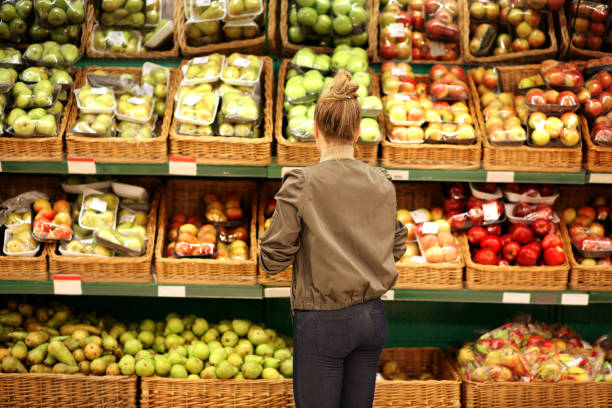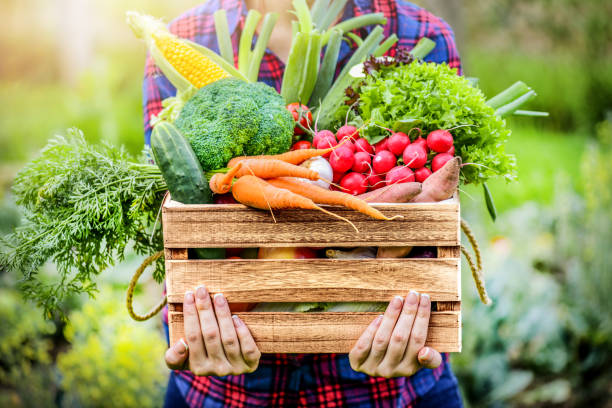What Can We Expect Concerning Food Availability in 2023?
The year 2023 brings various difficulties as we approach the future of food availability. In addition to reduced water and resources as a result of manmade changes to the environment, food production levels could rapidly decline if we fail to address these impending issues. In order to preserve the stability of the food system in the coming years, it will be necessary to identify the potential threats and devise the most effective countermeasures.
A viable answer could be farm loans, which could allow better access to modern technologies and farming equipment that can boost agricultural productivity. With them in place, resource shortage remedies may become more feasible, hence improving food production. Research indicates that farm loans are advantageous for farmers and the agriculture economy as a whole; therefore, with additional research and implementation, this method might be used to tackle a number of the challenges we face in 2023.
Food Supply Is Affected by Global Warming
The effects of global warming on food accessibility and food production are already enormous. Heat stress, floods, and droughts are resulting in crop failure, which makes food scarce. By limiting the available food supply, the spread of pests, weeds, and illnesses exacerbates the situation. This trend will continue to worsen as sea levels rise due to the melting of glaciers and polar ice caps, resulting in a decrease in the availability of arable land. Due to the effects of global warming on agriculture and food production, this could cause a historic food scarcity in the future years.

Global Warming
Food production is impacted by climate change in different ways. Droughts and floods can be caused by higher temperatures, resulting in lower crop yields. It can also result in more severe weather and a loss in soil fertility. Additionally, warmer temperatures might provide a more favorable environment for pests and diseases. As climate change persists, it is crucial to devise measures to offset its effects on food production.
As the effects of climate change continue to wreak havoc on weather patterns, the availability of water for agricultural production has become a critical concern. Water is a key requirement for the majority of food crops, and any decline in availability can have devastating effects on food production. This includes not only its effect on crop output, but also how water is used for irrigation and food accessibility. As water rights and the food environment become increasingly contentious owing to water scarcity, tensions can occur between food producers and consumers. To guarantee that food stays accessible and reliably produced in this new agricultural landscape, it will be necessary to manage global water supplies responsibly.
Degradation of Land
Changes in land use, soil depletion, urban growth, and climate change all contribute to land degradation. This decreases the quantity of land that is suitable for agriculture and pressures existing ecosystems. Land degradation also diminishes nutrient availability in the soil, resulting in nutritional deficits that might hinder crop growth. As land degradation proceeds, it is crucial to preserve the fertility of the soil in order to assure food supply.
Desertification
Desertification is a significant environmental problem, eradicating once-fertile lands and endangering our global food security. It influences and is influenced by human activities in arid and semi-arid regions, including bad agricultural practices, climate change, overgrazing, and overexploitation of water resources. The consequent decline in soil fertility, vegetation, and productive land has disastrous impacts that extend well beyond the local area: it decreases crop yield output, resulting in global instability in food availability, which can impact global food prices. To safeguard the future availability of food sources, we must act to halt desertification before its irreversible consequences harm us all.
Urbanization
Globally, urbanization is altering population growth and living standards. It entails the migration of people into cities and the subsequent expansion of urban development, which reduces the amount of agricultural land available. As population continues to increase, so does the demand for food, particularly in emerging nations where population expansion is outpacing the deployment of adequate food production and delivery infrastructure.
The population growth rate exceeds the amount of food consumed per capita, posing a growing threat to global food security. To overcome this issue, governments must prioritize investments in efficient infrastructure that facilitates the development of sustainable food production and delivery systems.
Overcrowded Regions
Overpopulated regions are those with a high population density that cannot maintain the amount of inhabitants. This places a tremendous strain on food production, increasing the possibility of food shortages. In order to secure food security in the coming years, it will be vital to regulate food production in overpopulated areas as the global population rises.
Pests and Illness
The prevalence of pests and illnesses in agricultural areas can have a significant impact on the availability of food worldwide. Existing strategies for containment and prevention become less effective as unanticipated environmental changes cause the emergence of new infestations; if we do not develop a more effective approach to combat growing dangers, we may face significant food insecurity in the future.
Growers and other stakeholders in the agricultural business could have access to the skills and resources necessary to defend their investments from today's escalating risks, however, if sufficient funds were invested in the study of new technologies and solutions. Without these vital investments now, we risk jeopardizing our ability to ensure food availability in the future.

Resource Depletion
Using natural resources quicker than they can be replaced creates a serious problem as the world's population continues to expand. To overcome this obstacle, we must develop sustainable agriculture practices that provide adequate food for present and future generations without relying on limited resources such as fossil fuels and minerals or harming the environment.
Fortunately, in recent years, innovative farming techniques such as hydroponic growth, aquaponics, multi-crop rotation systems, composting techniques, and sustainable harvesting have arisen, which require fewer resources than conventional farming methods to produce healthy and bountiful crops. By investing in these technologies now, we ensure that everyone will have access to wholesome food in the future.
Poor Food and Agriculture Administration
Domestic food production is one of the greatest contributors to a nation's Gross Domestic Product (GDP). When a country's infrastructure is inadequate, it can have a disastrous effect on the food supply, resulting in a decline in its GDP.
For a variety of causes, inadequate roadways, storage facilities, and transportation networks are major contributors to this situation. With inadequate means of transporting food from its source to its destination or inadequate storage facilities, food is more likely to spoil before it reaches the market. In remote regions that lack access to services such as the production and delivery of essential goods, the risk of poverty and food insecurity increases proportionally. Supporting domestic manufacturing with adequate infrastructure is essential to the growth of the domestic gross domestic product.
Inadequate Investment
It is crucial to invest in agricultural marketing and technology to ensure that food supply can keep up with rising demand. Without the necessary investments, farmers cannot take advantage of current research and development opportunities that boost productivity.
This lack of resources also hinders growers' access to training and technology, making it harder for them to accurately respond to shifting customer needs and market conditions. By investing in these areas, farmers all around the world are able to maximize yields from their land and profit from increased commodity prices.
It is evident that proper support for agricultural marketing and technology presents a significant opportunity for food production, which is crucial at a time when population expansion exceeds available resources.
Food Waste
Food waste is a significant and vexing obstacle to food availability. It is believed that up to forty percent of the food produced in wealthy nations goes uneaten and is subsequently discarded. This is a double-edged sword that must be dealt with as soon as possible, since it contributes significantly to a rise in emissions and reduces the amount of food available.
Fortunately, this issue may be addressed by instituting improved management and practices surrounding food production, distribution, and consumption. By taking steps to reduce food waste, we can ensure that future generations have access to sufficient, nutrient-dense food resources.
Altering Food Intake and Dietary Routines
As the global population rises and habits evolve, food production struggles to meet minimal dietary energy requirements, dietary diversity, and diet quality. As dietary patterns shift, the demand for specific items increases.
To ensure that everyone has access to reliable and safe food, we must prioritize sustainable food production methods. For everyone to have access to high-quality food, society must adapt rapidly.
In 2023, the food supply will be affected by environmental changes, depletion of resources, and other factors. Understanding these future problems and implementing answers is essential for food security. Improved technology, sustainable habits, and an effective infrastructure may resolve future food supply problems and ensure that everyone has enough to eat.
Feel free to check this blog post from Farm Plus Financial to learn more about this topic.

